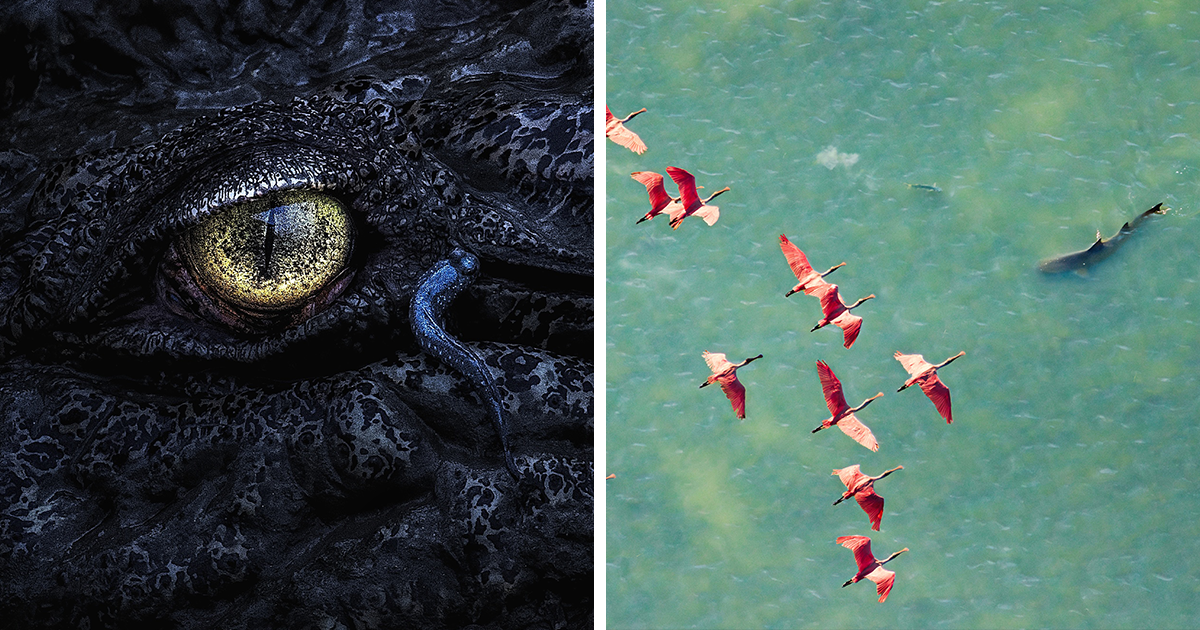Uncover the Hidden Wonders of Mangroves Through These Stunning 2025 Award-Winning Photos!
Ever wonder what it’s like to moonlight as a mudflat treasure hunter at low tide? Picture this: a little village girl in a striking red dress, tiptoeing along the winding banks of the Matla River, scooping up oyster shells like a pro—her reflection doing a cheeky little dance on the riverbed. It’s more than just shell-picking; it’s a rhythmic ritual carved by tides and tradition in the wild Sundarbans delta. There’s something wildly poetic about how her fleeting footprints vanish with the next tide, whispering stories of resilience and survival in a place where nature plays both friend and foe. Talk about a real-life dance with impermanence—if that doesn’t make you pause and chuckle at life’s quirky laws, nothing will. Dive into a world where each shell isn’t just a shell, but a symbol of childhood shaped by water’s whims and a community’s unbreakable bond with the land beneath their feet. LEARN MORE

At low tide along the winding banks of the Matla River in Canning, a village girl bends gracefully over the exposed mudflats, carefully picking oyster shells. Dressed in red, she stands out against the cool, textured earth, her reflection mirrored in the riverbed. The curving riverbed guides her steps like a natural path, each shell a small offering from the receding tide. In this quiet labor, her presence becomes part of the landscape’s raw, rhythmic beauty.
“As the tide ebbs from the serpentine curves of the Matla River in Canning, the riverbed unveils its textured secrets—wet, glistening mudflats etched with ripples, trails, and the soft shimmer of late afternoon sunlight. In the midst of this raw, expansive landscape, a village girl in a red dress bends low to pick oyster shells. With quiet focus, she sifts through the soft mud, fingers expertly picking shells nestled in the ridges left by retreating water. Her presence is both purposeful and poetic—each shell she collects holds value, whether for sustenance, sale, or the rhythm of a daily routine that binds her to the tides. The land around her is alive yet silent, echoing only the distant cry of a heron or the faint rustle of wind in the mangroves beyond. The Matla, with its unpredictable swells and brackish waters, is both friend and threat—a provider of life and a reminder of nature’s unforgiving edge. During low tide, it offers this narrow window of opportunity, when its receding waters allow access to the hidden world beneath. For the girl, this moment is not just about shells but survival, tradition, and a deep, inherited knowledge of the land and river. The curve of the river acts like a natural frame around her, a reminder of how human life here is woven into the pattern of water and mud. All the oyster shells will be sold to make food for the nearby poultry farm. Her feet leave fleeting prints in the silt, washed away with the next tide, yet echoing the countless footsteps of those who came before her. The shell-picking is a ritual of resilience in a landscape shaped by impermanence. This scene, humble in scale, captures the enduring relationship between people and place in the Sundarbans delta. It speaks of dignity in simplicity, of childhood shaped by tides, and of a community’s ability to find life and meaning in the most fluid and challenging of environments.”




















